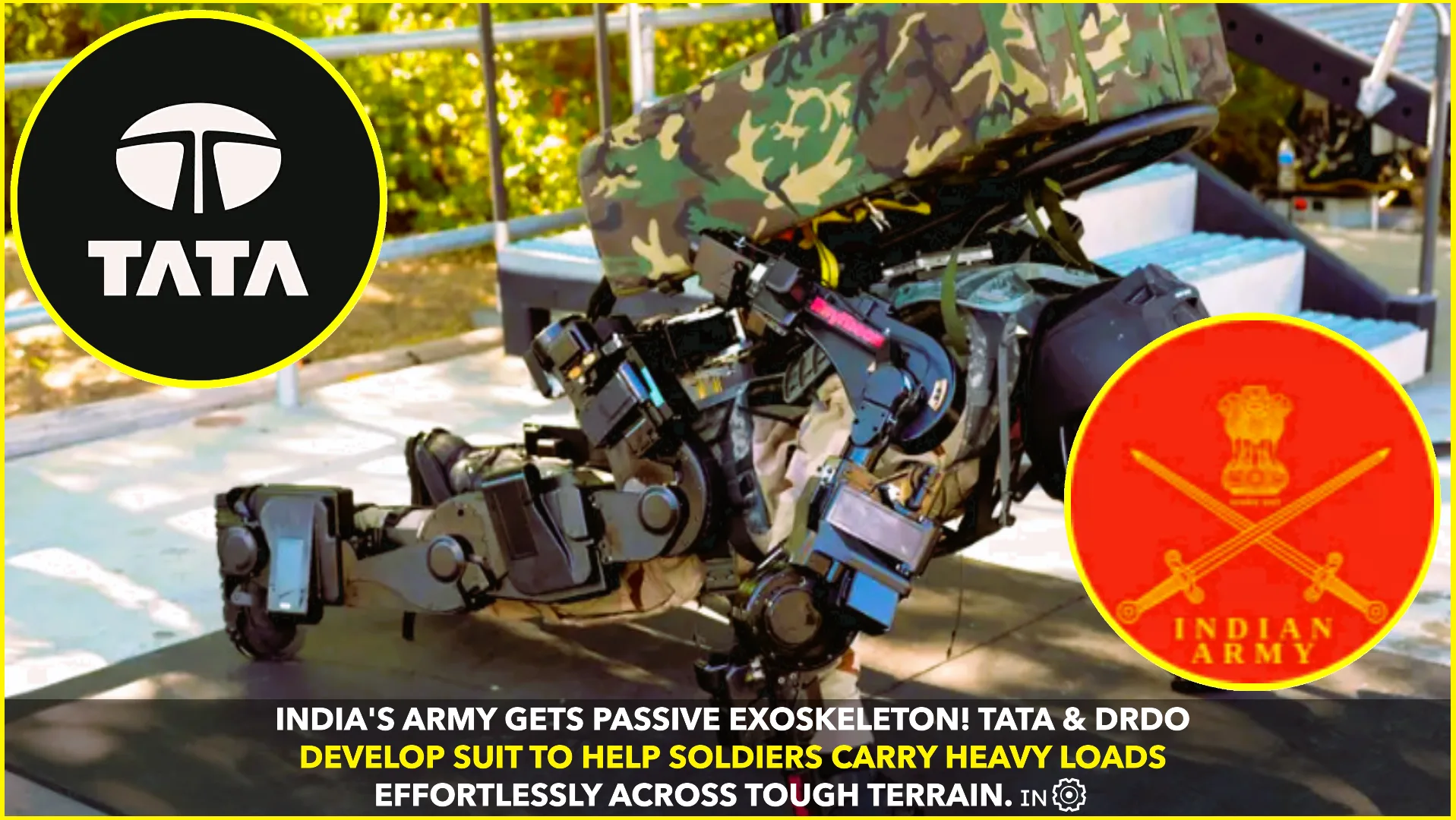In a significant advancement in defense technology, Tata Advanced Systems Limited (TASL) and the Defence Research and Development Organisation (DRDO) have jointly developed a passive exoskeleton suit aimed at enhancing the mobility and endurance of Indian soldiers. This innovative technology is designed to assist soldiers in carrying heavy combat loads across challenging terrains, thereby reducing physical strain and the risk of injuries.
What Is a Passive Exoskeleton?
A passive exoskeleton is a wearable device that provides mechanical support to the wearer’s body without the need for external power sources. Unlike powered exoskeletons, which use motors and batteries to augment movement, passive exoskeletons rely on springs, dampers, and other mechanical elements to redistribute the load and reduce the strain on the wearer’s muscles and joints. This design makes them lightweight, cost-effective, and suitable for prolonged use in demanding environments.
The exoskeleton developed by TASL and DRDO is designed to be worn over standard military uniforms or combat gear, ensuring compatibility with existing equipment. It provides crucial mechanical support to key joints such as the knees, hips, and lower back—areas most susceptible to fatigue and injury during prolonged operations.
Real-World Testing in Rugged Environments
The exoskeleton has undergone rigorous testing in various simulated combat scenarios, including long marches, climbing, and crawling. These trials have demonstrated its effectiveness in reducing fatigue and improving the mobility of soldiers in demanding environments. Notably, the system has been tested in the rugged terrains of the Himalayas, where soldiers often face extreme conditions.
Enhancing Soldier Endurance and Mobility
The development of this passive exoskeleton marks a milestone in India’s pursuit of self-reliance and innovation in defense technology. It reflects a broader trend among global militaries to adopt wearable augmentation devices that improve soldier safety, productivity, and operational effectiveness, especially in environments where traditional logistical support is limited or in high-altitude, inhospitable terrains.
The enhanced load-bearing capability not only improves operational efficiency but also extends the endurance of soldiers, enabling them to remain active for longer durations without frequent rest breaks. The exoskeleton’s design allows soldiers to perform strenuous tasks such as long marches, climbing, and crawling with greater efficiency and less fatigue.
Future Prospects and Developments
The TASL-DRDO passive exoskeleton is currently undergoing trials with the Indian Army to assess its effectiveness and operational benefits. Feedback from these tests is expected to inform further refinements and the potential integration of active, powered components in future iterations.
This development underscores India’s commitment to equipping its armed forces with cutting-edge solutions for modern warfare. By combining human skill with advanced engineering, India is stepping into the future of combat technology, right here.
Sources:










